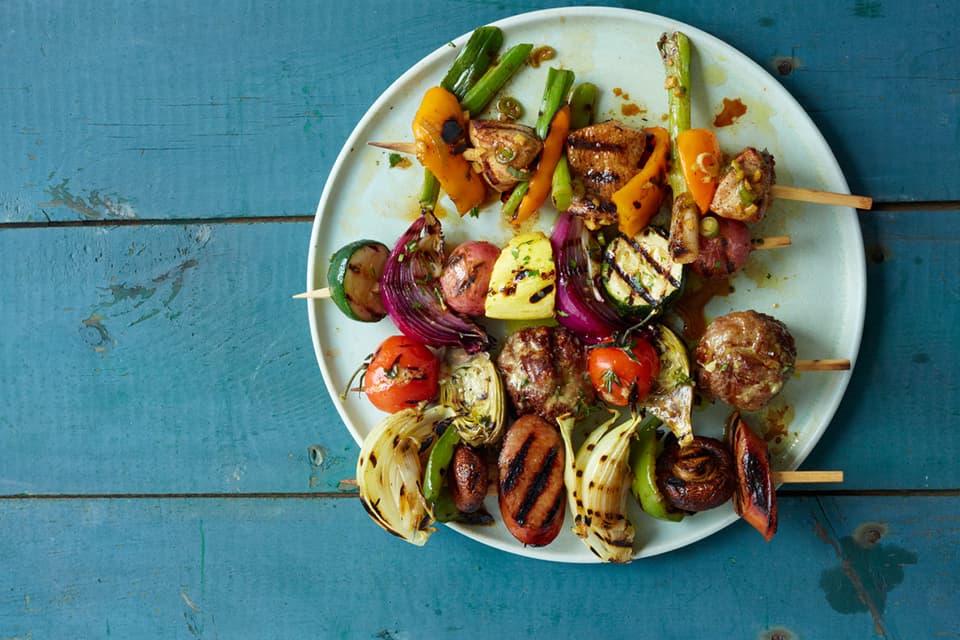Whether you’re simply dabbling in Paleo cooking with flourless almond butter brownies and stir-fried cauliflower rice or adopting the diet in its entirety, it’s clear that the Paleo lifestyle is taking the world by storm. Cutting carbs and leaving behind legumes sure is trendy, but is the Paleo diet actually good for weight loss? Better yet, is it “healthy”? As with any approach to weight loss, it’s important to keep in mind that diet quality and long-term sustainability are the key factors at play. Let’s begin with the basics.
WHAT’S PERMITTED ON PALEO?
In terms of macronutrient composition, Paleo diets tend to be higher in fat and animal protein and lower in carbohydrates. Approved foods include grass-fed meats, fish, seafood, fruits, vegetables, eggs, nuts (excluding peanuts, which are technically legumes), seeds and healthy, minimally refined oils like olive, flaxseed, walnut, coconut and avocado. Foods that are discouraged include all grains, legumes, dairy, refined sugar, potatoes (though some say sweet potatoes are OK), processed foods and highly refined vegetable oils.
THE PROS OF PALEO
The good news is that this way of eating definitely has a whole-foods focus. You can’t eat highly processed foods and added sugars, although Paleo crackers, cookies and granolas are popping up left and right. Because you’re typically consuming more fat and protein, this can be a very satiating way to eat. The boost in fat also helps in the flavor department, meaning less salt is needed for cooking. Since the Internet is full of creative recipes for alternatives to bread, pastries and more using nut and coconut flours, it doesn’t have to feel super restrictive either.
Some studies suggest that Paleo diets may be effective for weight loss and/or metabolic syndrome because you can eat fewer calories without consciously trying to restrict. Essentially, consuming simple, Paleo-style foods may lead to eating less and shedding pounds more quickly. Some studies suggest it may help improve glycemic control for those with Type 2 diabetes.
The problem with the science around Paleo is that the available studies use very limited sample sizes, so take these findings with a grain of salt. And, if you’re someone who craves oodles of salt, fat and sugar with each meal, this simple eating style (Think: baked chicken with herbs, sliced avocado and steamed sweet potato) is much easier said than done.
READ MORE > THE TRUTH ABOUT TOFU AND DAIRY FAT
THE CAVEMAN CONS
For starters, higher intake of animal protein means more cholesterol, and animal fat increases your risk for heart disease and several cancers. Harvard researchers analyzed 90,655 premenopausal women and determined that intake of animal fat, especially from red meat and full-fat dairy, during premenopausal years was associated with an increased risk of breast cancer. Frequent consumption of meat — particularly red meat — is also associated with an increased risk of colon cancer.
Our ancestors were extremely active, hunting game and rodents, picking berries off bushes and digging up tubers as opposed to heading to Whole Foods for grass-fed butter, organic fruit and bacon by the pound. Just about every fruit and vegetable from the Paleo era looked drastically different from the ones we eat today. The strongest species have been transformed over time through careful selective breeding. Farmers sowed seeds from plants with the most desirable traits until everything became bigger, sweeter and juicier.
Prohibiting foods thought to not be available to Stone Age hunter-gatherers has some drawbacks. Contrary to popular belief, DNA tests show that humans of the Neolithic era (which followed the Paleolithic era) actually did eat grains and legumes — cooked ones, too! — such as barley, lentils and peas. You heard right: Starch granules from legumes and wild barley have been found in the teeth of 40,000-year-old Neanderthals. Modern humans weren’t the first to harvest and prepare wild grasses and seeds.
Whether or not you believe that we are biologically identical to Stone Age humans, there’s no denying the benefits of some of our modern-day eating habits. Eliminating legumes, beans and whole grains means not getting their fiber, plant-based proteins and phytochemicals proven to combat chronic diseases, namely cancer. A cancer-prevention diet is one that’s high in fiber, low in animal fat and includes lots of fruits and vegetables. Whereas diets high in animal protein and saturated fat can lead to heart disease, plant-based diets can actually reverse it.
HOW TO HEALTHFULLY LOSE WEIGHT THE PALEO WAY
To slim down while eating like a caveman, start by focusing on what you can eat rather than what you can’t. Pack 2/3 of your plate with plant foods by loading up on fruits and veggies and using antioxidant-packed herbs and spices for flavor. Be sure to get plenty of carbohydrates from Paleo-permitted starchy foods and fruit. Consume nuts, seeds and avocados for heart-healthy fats in moderation, but don’t overdo it, since those are very calorie-dense. Choose well-sourced lean meat and seafood in appropriate quantities. Reduce carbohydrate cravings by making breads and baked goods using coconut flour,which will add a hefty dose of fiber and plant-based protein, too!
Last but not least, keep moving! Consistent exercise is one of the few behaviors that nearly everyone agrees is healthy, both mentally and physically.
CONCLUSION: BALANCE IS BEST
As usual, more research is needed to support many of the early, often overhyped findings of small studies on Paleo diets and weight loss. Remember that you can still reap the benefits of a balanced, nutrient-dense whole-food diet without eliminating all non-Paleo foods. If you want to eat peanuts or quinoa but still abstain from dairy and refined flour and sugar, go for it!
A Paleo lifestyle doesn’t have to be all or nothing, especially since nutrition is certainly not one size fits all. Find what works best for you, and then set small, realistic goals to maximize your health potential each day.





